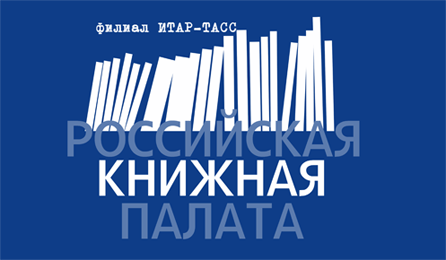Imangulov L.R., Kuksin Ya.K. New functions of coastal rural areas in southern Russia: On the example of the Temryuk district in the Krasnodar Region // The Russian Peasant Studies. 2023. V.8. №1. P. 104-130.
DOI: 10.22394/2500-1809-2023-8-1-104-130
Annotation
The article considers new functions of the coastal rural areas in southern Russia in the post-Soviet period. The authors identify regional features of the post-Soviet transformation of the coastal countryside, including the preservation of agrarian specialization and employment, growth of the rural population, new functions of rural areas, positive migration balance, etc. Based on the dynamics of the available social-economic indicators (investments in fixed assets, population, migration, etc.), the authors show the intensity of transformations at the district and settlement levels. The main social-economic actors of rural transformation are agricultural enterprises (wineries), tourism, ‘new Southerners’, port facilities, etc., which affect the main components of rural areas — land use, transport and social infrastructure, employment and local communities. At the intra-district level, the authors suggest a typology of rural settlements based on the dynamics of transformations in the post-Soviet period and prevailing functions (recreational, agro-industrial or multifunctional). In the final part of the article, based on the in-depth interviews, the authors identify the post-Soviet trajectories of rural settlements of the same kind and administrative status but with different functions and locations — Golubitskaya, Starotitrovskaya and Taman. Based on the multi-scale analysis of the local rural transformations, the authors emphasize the key role of the geographic factor in the functional typology of rural areas.
Keywords
Geography of rural areas, rural areas, multifunctionality, geographical factor, investments, Temryuk district.
About the author
Imangulov Linar R., Master’s Student, Department of Economic and Social Geography of Russia, Faculty of Geography, Lomonosov Moscow State University. Leninskie Gory, 1, Moscow, 119991.
E-mail: This email address is being protected from spambots. You need JavaScript enabled to view it.
Kuksin Yaroslav K., Bachelor’s Student, Department of Economic and Social Geography of Russia, Faculty of Geography, Lomonosov Moscow State University. Leninskie Gory, 1, Moscow, 119991.
E-mail: This email address is being protected from spambots. You need JavaScript enabled to view it.
Imangulov L. R. Typology of settlements in a polyethnic region (on the example of Chuvashia) // The Russian Peasant Studies. 2021. V.6. №4. P. 107-124.
DOI: 10.22394/2500-1809-2021-6-4-107-124
Annotation
On the example of Chuvashia (Batyrevsky district), the author considers the stages and factors of the transformation of rural settlements in general and of particular rural settlements in the pre-revolutionary, Soviet and post-Soviet periods. The author identifies a relationship of various transformation factors at different stages of the rural settlement development. In the pre-revolutionary period, this development was determined by the ecology of the territory and demographic resources, in the Soviet period—by the administrative-territorial transformations and “external shocks” (wars, famine, etc.), in the post-Soviet period—by the scale of the population outflow to large cities, institutional conditions and ethnic structure. The survey in rural areas of Chuvashia revealed the differentiation of villages on the basis of their ethnic structure and other features. Based on the analysis of the statistical data and field observations, the author presents a typology of rural settlements in the multiethnic region, taking into account a set of characteristics of the village as determined by the prevailing ethnos (the time of the settlement’s foundation, its administrative status, population dynamics in different periods, economic well-being, the development of social infrastructure, the scale of migration outflow, etc.). Examples of the selected types of settlements: Chuvash central villages, Chuvash villages—‘local centers’, Chuvash ‘ordinary villages’, Tatar central villages, Russian villages with former industrial specialization, etc. In the post-Soviet period, transformations of different types of rural settlements were influenced by factors of internal and external nature in different proportions. Thus, the social-economic situation in the Chuvash settlements is determined by a relatively high birth rate and employment opportunities in agriculture due to the preservation of the share distribution of land. In Tatar villages, the social-economic situation depends rather on the manifestation of ethnic-psychological features of the population —the most regulated, closed and cohesive societies are economically more successful and sustainable concerning external factors.
Keywords
Geography of rural areas, factors of rural transformation, ethnic structure of the population.
About the author
Imangulov Linar R., Master’s Student, Department of Economic and Social Geography of Russia, Lomonosov Moscow State University. 119991, Moscow, Leninskie Gory, 1.
E-mail: This email address is being protected from spambots. You need JavaScript enabled to view it.
Migrations as the main factor in the transformation of the settlement system of the Crimean Peninsula
Aug 07 2021Gusakov T.Yu. Migrations as the main factor in the transformation of the settlement system of the Crimean Peninsula // The Russian Peasant Studies. 2021. V.6. №2. P. 99-120.
DOI: 10.22394/2500-1809-2021-6-2-99-120
Annotation
For centuries, people have been moving from place to place for a variety of reasons, which created both permanent and temporary population of the entire habitable space. Due to these migrations, settlements appear and disappear —auls, villages, towns, cities, megapolises, etc. Moreover, migrations create a settlement system of a certain territory, which is gradually transforming. And since each territory has its own features of the social-economic development, the patterns of settlement systems also differ by region. The article considers the evolution of the settlement system of the Crimean Peninsula under the influence of migrations. The settlement systems are compared and analyzed based on the models of the settlement network for different years, which allows to assess the impact of migrations at different stages of the historical development. Over the past 250 years, the settlement system of the Crimean Peninsula has undergone significant changes: from small settlements with foci of animal husbandry—to the medium-sized and in some places large settlements. The author identifies the main stages in the transformation of the settlement network of the Crimean Peninsula and analyzes the development trajectories of some types of settlements.
Keywords
Geography of rural areas, migrations, rural areas, resettlement, rural resettlement, settlement network, geo-information systems.
About the author
Gusakov Timur Yu., Researcher, Center for Agrarian Studies and Center for Prospective Sociological Research, Russian Presidential Academy of National Economy and Public Administration; PhD Student, Geographical Faculty, Lomonosov Moscow State University. 119571, Moscow, Vernadskogo Prosp., 82.
E-mail: This email address is being protected from spambots. You need JavaScript enabled to view it.






















